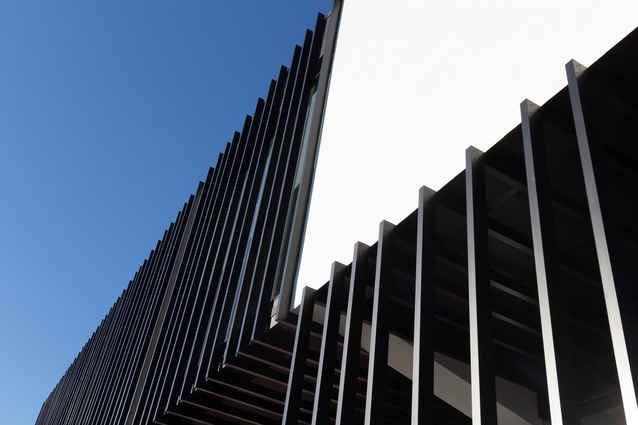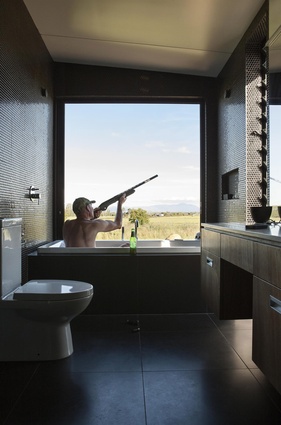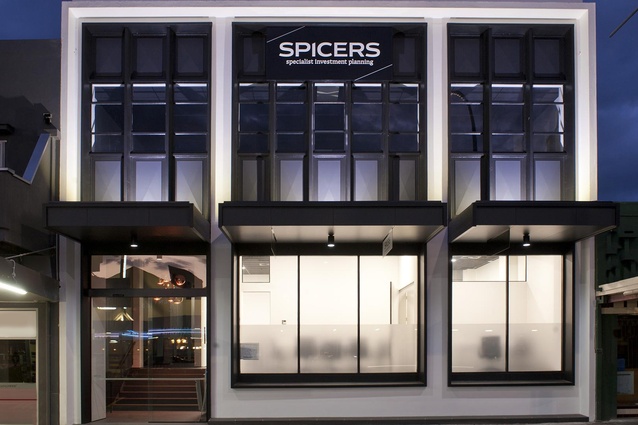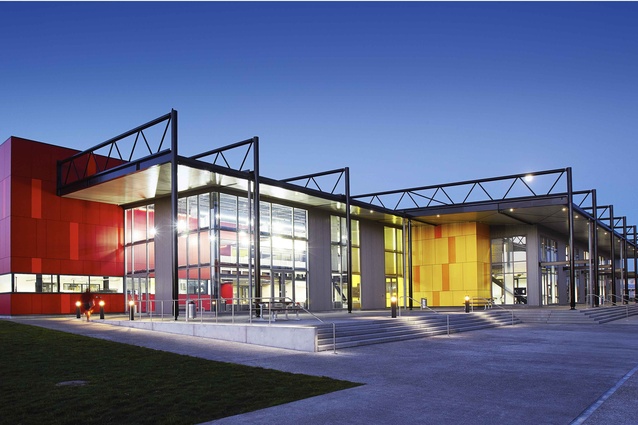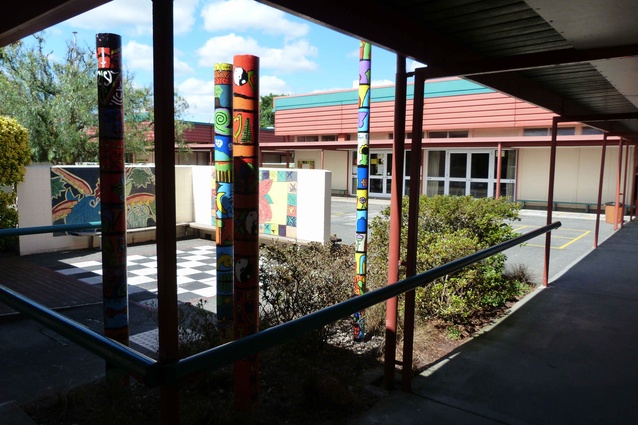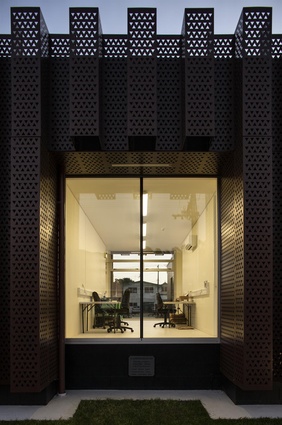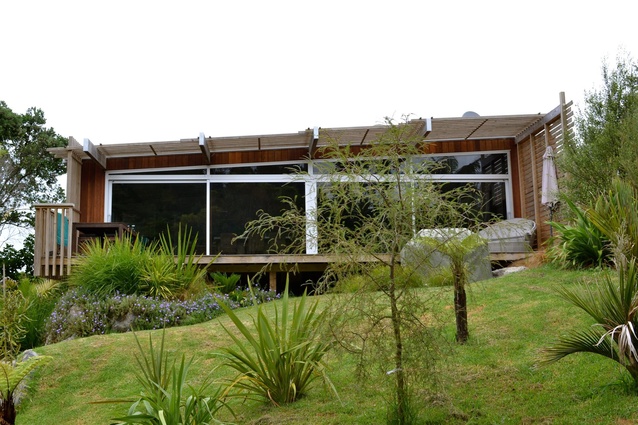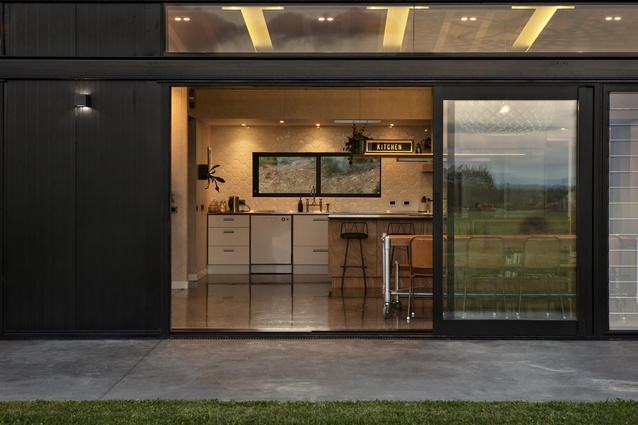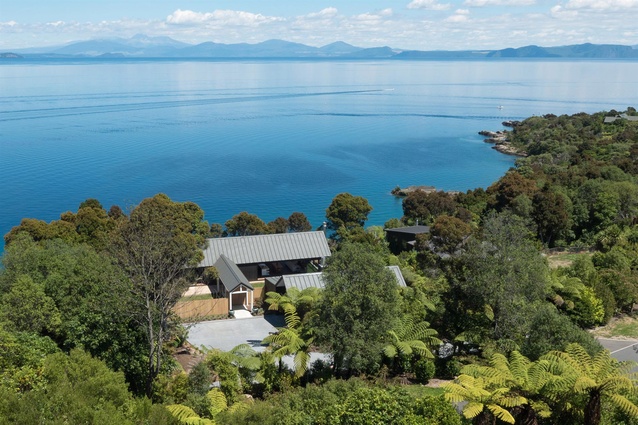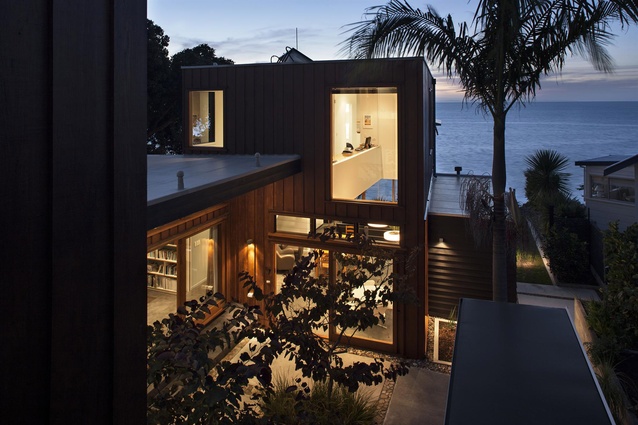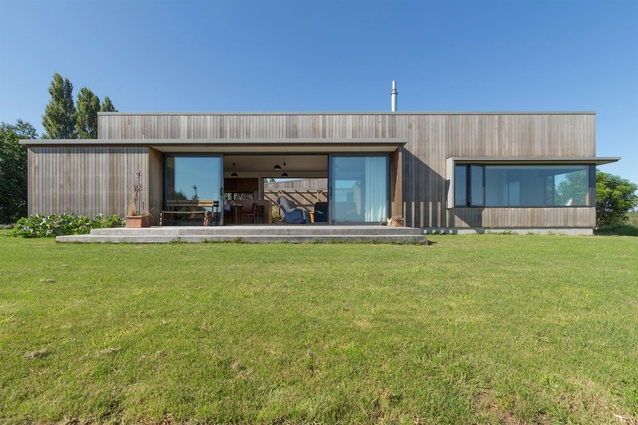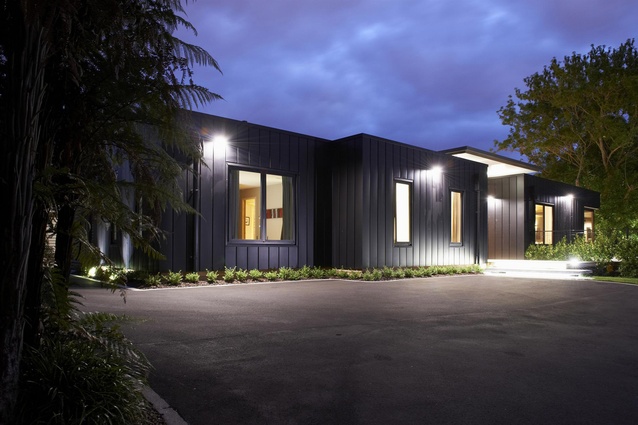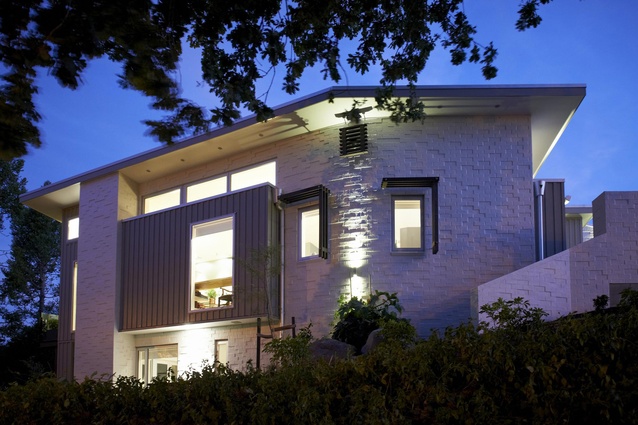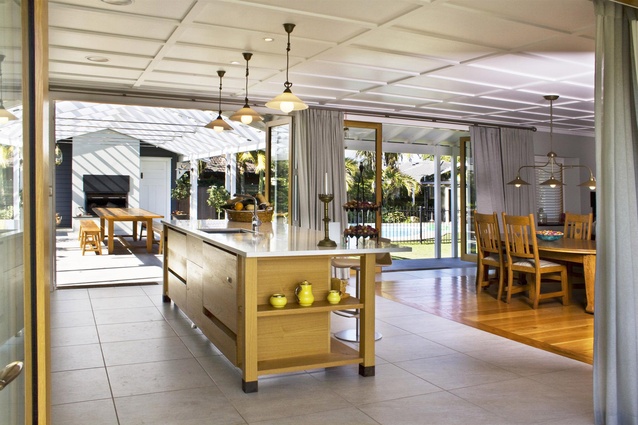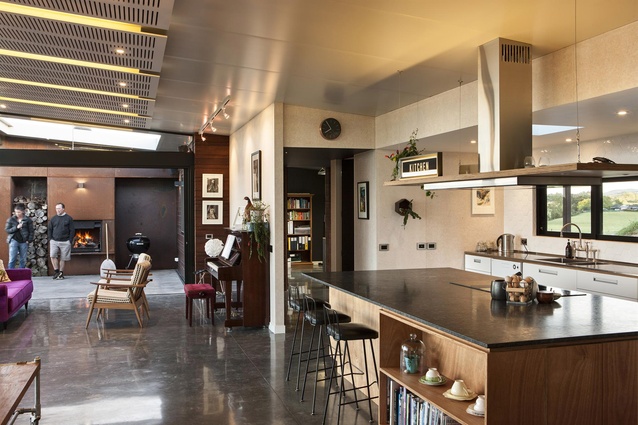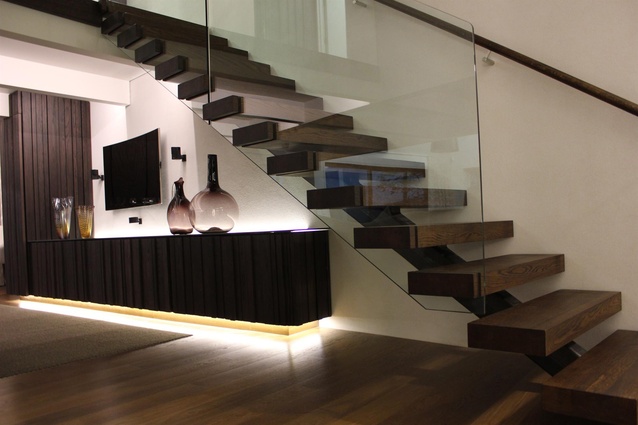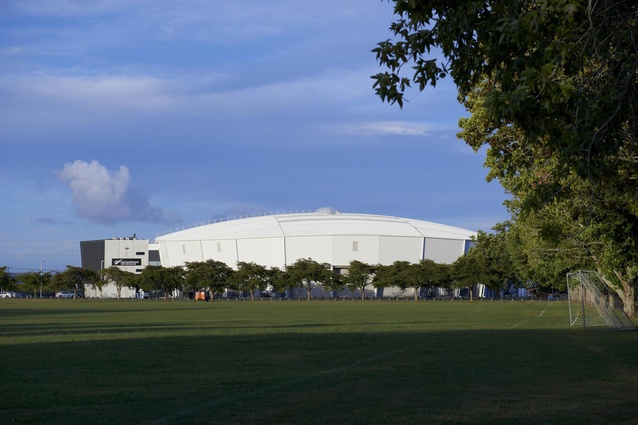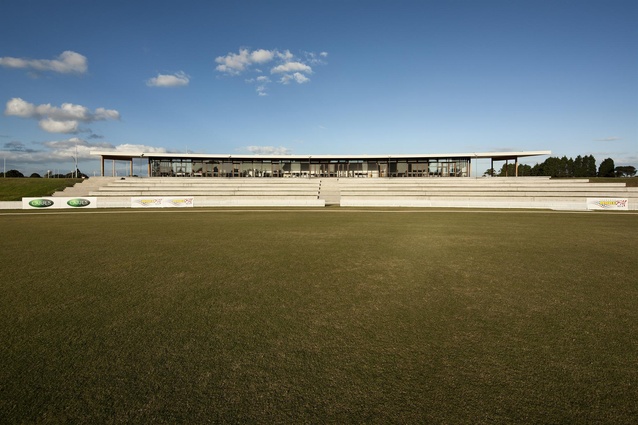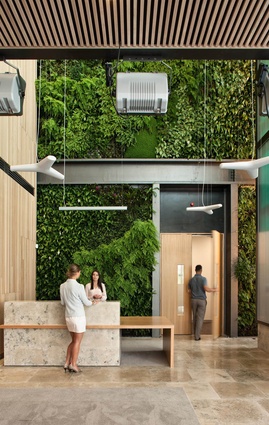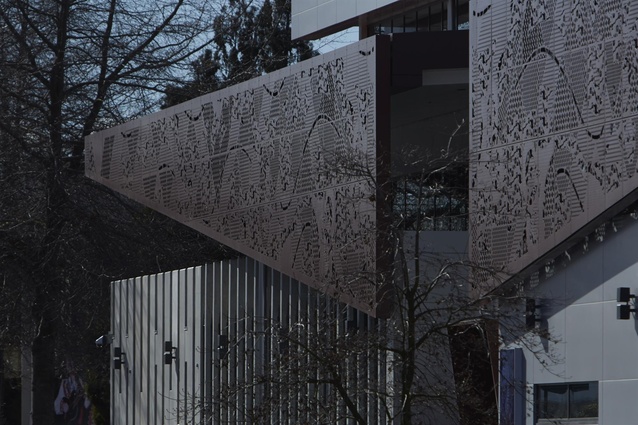2015 Waikato-BoP Architecture Awards
A patient-centric radiotherapy clinic, a police station, and new sporting centres for cricket and cycling feature in the Waikato–Bay of Plenty Architecture Awards held on 1 May.
Camden Cummings, convenor of the four-person jury that visited 28 shortlisted projects, described the overall standard of design as very high. Of the shortlisted projects, 18 received awards.
The other members of this year’s jury were architects Lindley Naismith and Les Matthews, and lay juror, Alasdair Christie, a Tauranga lawyer.
Winners of 2015 Waikato–Bay of Plenty Architecture Awards and jury citations are below:
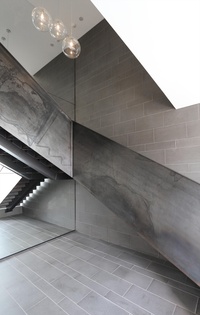
Commercial Architecture:
408 Anglesea Street by Edwards White Architects
This example of urban renewal on a budget shows how the reinvention of a once-tired building can breathe new life into a city’s urban fabric. From the street, the building’s vertical rhythm is enhanced by the dark-metal screen applied to the façade. The material theme continues into the interior, with new entranceways and lobbies benefiting from refined selections, monochromatic colour choices and a considered approach to lighting design. More dramatic design moves, such as the staircase of folded metal, are flourishes that serve to heighten the sense of overall quality.
554 Victoria Street by Edwards White Architects
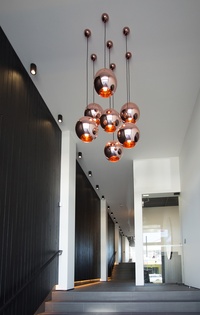
This project is more than just a clever façade addition; it’s a highly successful example of adaptive re-use that gives Hamilton’s main street a shot in the arm. On this project, architect, developer and builder have clearly reaped the rewards of a close working relationship. The once worn-out bank building has been opened up to the street, and through the large, newly glazed entranceway a window into a commercially sophisticated interior has been created. Within the building, natural light is prioritised and the clever re-organisation undertaken complements modern approaches to working life.
Education:
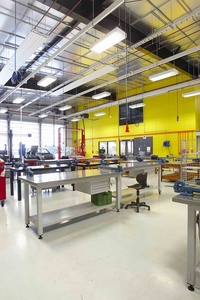
Wintec Engineering and Trades Facility by Chow Hill Architects
This new home for 1000 engineering and trades students at Wintec’s Rotokauri campus emphasises a student-centred, collaborative approach to learning. This is a long life, “loose-fit” structure, which is incredibly adaptable to modern learning requirements. Overall, the composition might be described as “bones-out”, with the buildings services and structural systems left on display to aid student understanding. In effect, the building is not just a place to go and learn; it is an integrated part of the learning experience.
Resene Colour Award: From the exterior, this building reads as a series of vibrant boxes; inside, those vibrant colours serve to provide an intuitive system of wayfinding while acting as a counterpoint to the “bones out” tectonic of the building.
Enduring Architecture:
Deanwell School (1968)
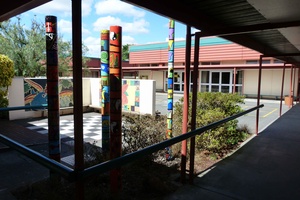
Deanwell School, formerly Melville Experimental School, is recognised as the first open-plan school in New Zealand. The school utilised simple forms supported by space-frame roof structures, which spanned teaching spaces without intermediary supporting walls – spaces not unlike modern learning environments. The school’s four classroom blocks also benefit from a strong relationship with the outdoors, with large glazed doors connecting with covered walkways and a network of finely scaled landscaped courtyards. In 1970, this ‘experimental’ model, a significant move away from the prevailing typology of one teacher, 40 children, 40 desks, won an Auckland Architecture Association Design Award award. Today, the original buildings are superbly maintained and utilised, serving as evidence of their enduring relevance.
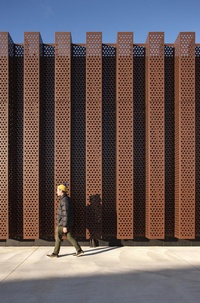
Heritage Architecture:
The Treasury Research Centre and Archive by Architectus
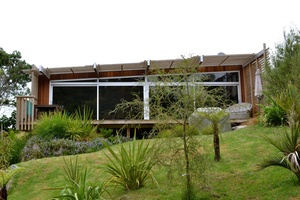
A former Carnegie Free Library has been carefully restored to provide public access to formerly homeless archival records of the social history of the community, while a refined and shamelessly contemporary building has been built adjacent to store this information for posterity. This clever and elegant pair of buildings contributes a remarkable urban presence to Thames. Not only do they offer a wonderful amenity for locals and visitors alike, but they also have the power to transform the town’s view of the value of good architecture, in terms of both its historic and future heritage. The success of this project is a tribute to Morrie and Geraldine Dunwoodie, and the team of dedicated local people behind the Coromandel Heritage Trust.
Housing:
Bagge-Des Forge House by Roger Course Architect
Maximising the opportunities afforded by an otherwise difficult slice of subdivided and covenanted suburbia-by-the-sea, this Waihi Beach house exploits the brooding appeal of an adjacent bush-filled valley, as well as more distant snippets of ocean, in a way that belies the proximity of neighbours. Refreshingly compact and achieved with an economy of means, the house delivers a comfortable informality and is warmly expressive of its place and the personality of the active family that lives there.
Big Sky Farmhouse by Xsite Architects
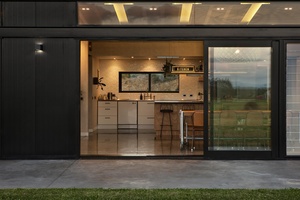
Old-school farming ‘can-do’ lies behind the realisation of this house, where the land has been shaped to literally ground the elegant, lightweight building in a sky-dominated landscape of rolling pasture. Cowshed building technology, extensive prefabrication and industrial materials of structural steel, in-situ and precast concrete, and composite insulated panels, have allowed rapid construction at a cost rarely seen, particularly for the quality of the living environment achieved. Exuberant interiors reflect the passionate commitment of the owner in the process and celebrate domestic farming life.
Lakeside Holiday House by Fraser Cameron Architects
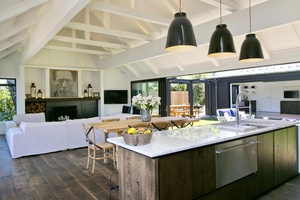
When sun and views occupy opposite compass point an irksome architectural conundrum arises. This elongated pavilion, perched on a Taupō cliff edge with a panorama of lake and mountains for company, solves the problem through extensive glazing on two long sides – a manoeuvre that maximises the opportunities for views from south and north, while providing a sun-welcoming living court that is protected from the cold southerly wind. Serene interiors draw on the boatshed form, emphasising the elegant exposed trusses and utilising to effect a quiet texture-based material palette, all complemented by the skilful use of concealed lighting.
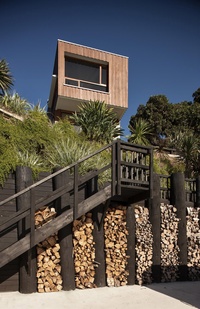
Ngarimu Bay House by Xsite Architects
The trim and unpretentious exterior this house presents to the street only hints at the delightful sequence of spaces to follow. Superbly matched to its context and environment, the building is expressed as a collection of timber-clad boxes grouped around a sheltered, north-facing courtyard that descends down a steep site to connect with views of the Firth of Thames. Excellent spatial proportions and material choices, combined with effective site planning, all contribute to the creation of a warm and welcoming environment.
Maniatutu Road Residence by Edwards White Architects
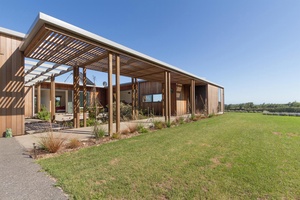
Carefully sited on a knoll in rolling Te Puke farmland, with Mount Maunganui making its presence felt in the distance, this courtyard farmhouse takes advantage of compelling views in all directions. Nearing retirement age, the home’s owners requested a modest and practical farmhouse, comfortable for the two of them day-to-day, but also able to accommodate visiting family. The architectural response exploits the opportunities of the courtyard, with visitor’s bedrooms occupying one wing and the main accommodation selfcontained in another. Although sited on high ground, this house is discrete. However the unassuming appearance is misleading, for a closer inspection reveals a sophisticated and crafted composition.
River House by APG Architects
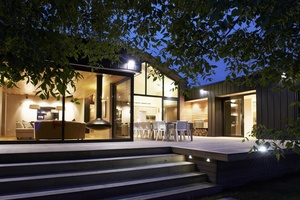
This central Hamilton riverside home is cleverly designed to support modern family life and entertaining within the footprint of a modest, pre-existing 1940s house. This design celebrates a uniquely strong connection with the river, with indoor and outdoor living areas articulated along the water’s edge. The interior arrangement is relaxed and playful, with clever concealment devices incorporated to engender a sense of neatness and order that more than compensates for the home’s compact size.
Southbank Townhouse by Antanas Procuta Architects
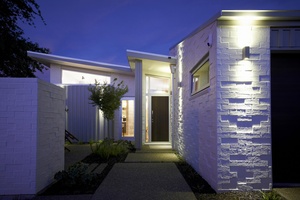
This CBD-edge, Cambridge townhouse makes the most of a compact site. The textured, white-painted brick exterior has been arranged to offer privacy against the adjacent street to the north, while focusing instead on the glimpses of trees and magnificent distant views to the east. The relaxed ambience and good connections to the landscape are a testament to a collaborative working relationship between architect, interior designer and landscape designer.
Housing Alterations and Additions:
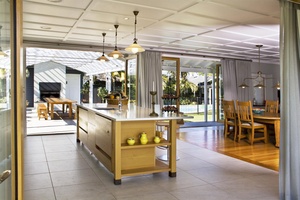
Craig Tebbutt House by John Henderson Architecture
The architect has admirably achieved the brief to sympathetically improve this 1920s Arts and Crafts home. The clever rearrangement of garage and driveway provides space for new gardens and a glazed outdoor room, while new gables and ocular windows further enhance the grand exterior. The internal transformation shows both a keen eye for modernisation and a particular attention to period detail. The result is an elegant and substantial character home, well suited to modern living.
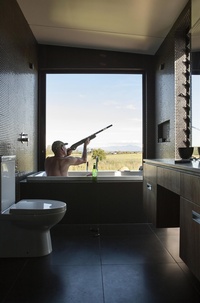
Interior Architecture:
Big Sky Farmhouse by Xsite Architects
This interior, for dairy farmers and their three teenagers, reflects a desire to respond to the big sky of the Hauraki Plains. The design is also evidence of a strong relationship between client and architect and a willingness to experiment, inside as well as out, with varied materials, including some, such as pre-fabricated composite steel and polystyrene panels, that are more typically found in dairy industry cool stores. This interior responds well to the natural environment and to the client’s brief, with separate areas for children and parents allowing the home to be opened up or shut down as family requirements dictate.
Kaiwaka Point Terrace Apartment by Fraser Cameron Architects
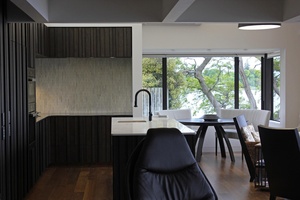
This refurbishment and addition project was beset by an additional challenge – very strict unit title constraints that would not allow any alteration to the exterior cladding. Despite this, the resulting works to this two-level terraced townhouse are a coherent response to client requirements. The works show a high degree of design and material resolution, well-defined spaces within an open-plan public area and careful use of lighting. Although sophisticated and pared back, the interior is welcoming and comfortable, with the overall experience heightened by the ‘borrowed’ views of the nearby lake.
Public Architecture:
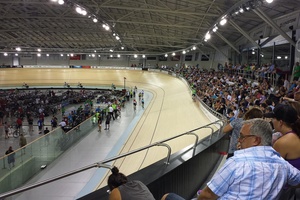
Avantidrome by Chibnall Buckell Marovic Team Architects
This significant resource for cycling and high performance sport – the “home of cycling” – is situated on a difficult site between State Highway one and a gully. The building’s simple and robust exterior form is a fitting response to its inner purpose – the track. Comprised of 250 metres of Siberian spruce, the track is both elegantly and functionally impressive. Also impressive is the lightweight roof structure; supported by the exterior circumference and without any interior support columns, it provides spectators, no matter where they sit, with unobstructed views of the action.
Bay Oval Trust Carrus Pavilion by Jasmax
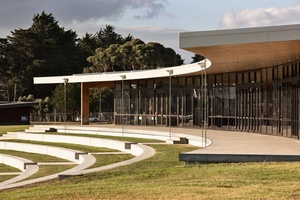
Located within a large community park between the Port of Tauranga and seaside Mt Maunganui, the new home for Bay of Plenty Cricket has been designed with aplomb. The pavilion, which meets the requirements for hosting international cricket, while serving the more prosaic requirements of local users, is both robust and elegant. Thick timber beams and in situ concrete walls ensure the building will endure any hard knocks, while the distinguished curve of the pavilion roofline, echoed by the sweeping terraces of the foreground, reflects the sweeping geometry of the oval itself.
Kathleen Kilgour Centre by Wingate + Farquhar
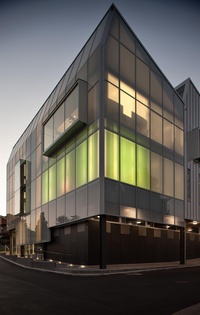
This new radiotherapy clinic is a striking addition to Tauranga Hospital’s health precinct, a brave and bold statement of architecture in both form and function, and a wonderful healthcare asset for the Bay of Plenty. This centre sits simply and elegantly on its site, with the envelope carefully formed to create an interior that is wholeheartedly focused on patient comfort. Within the building, subtle features aid navigation and help alleviate some of the stresses typically associated with medical facilities. The clear focus on energy-saving objectives means this building can be considered a success at human, healthcare and environmental scales.
Resene Colour Award: Colour has been expertly applied as a distinguishing feature and an orientation device. The interior’s gentle green hues, combined with dramatic feature-wall planting and other highlights create an ambient interior experience that is psychologically calm and warm.
Rotorua Police Station / Te Amo Whakaruruhau by Leuschke Group and Vincent · Chrisp Architects
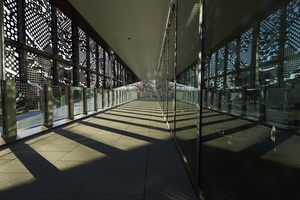
Modern police buildings must walk a fine line between community accessibility and the presentation of a safe and secure face. A proud addition to Rotorua’s urban landscape, this building is, via the laser cut aluminium korowai (or cloak) that is draped across its length, literally engraved with the culture and stories of the region. The building’s interior is cleverly programmed and technically sophisticated, designed to balance community access to public rooms while adhering to the strict security requirements that are required for efficient and effective policing and safe working environments.
Resene Colour Award: The earthy hues and strong identity that are the distinguishing features of the building’s exterior also carry through the building’s interiors, where compositions of strong, natural blocks of colour aid in the differentiation and definition of various areas.
The New Zealand Architecture Awards programme has been supported by Resene since 1990. The awards are judged by juries appointed by the New Zealand Institute of Architects and its branches.
All winners of 2013 Waikato–Bay of Plenty Architecture Awards are eligible for consideration at the top tier of the annual Architecture Awards programme, the New Zealand Architecture Awards, which take place in the first week of November.

